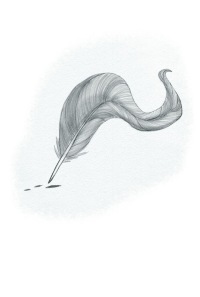Today’s post is a guest post by Diane Mae Robinson, award-winning author of the Pen Pie Yu Series with Sir Princess Petra and her trusty steed, Snarls. I appreciate Diane filling in at the last moment after I awoke with the yuckies. Diane is reviewing genres in children’s writing.
NOW, with a cough and a wheeze), I present Ms. Diane Robinson! yeah! yeah! cough. yeah.
Book Categories in Children’s Books
There are several different types of children book categories and sub-categories. The writing style and word count is different in each type of category. The following list is a general guideline of the categories, and these guidelines may vary by publisher.
Board books/ Toy books: Ages newborn to 3 years. These books are for the youngest of listeners and are meant to engage their minds in learning with textures, pop ups, flaps, noise makers, and lively illustrations. The words in these books are more about the sound they make when spoken by the reader. These books can have one word or just a few words per page.
Toddler books/ Concept books: Ages 3 – 5 years. Introducing basic learning through shapes, colors, alphabets, animals, and people, these books have a stronger emphasis on the words than the previous category. The images and interaction of the book are still the main focus for the child. These books average 200 – 300 words and are often in the form of the board book format.
Early picture books: Ages 4 – 6 years. Often referred to as picture story books,these are books written to be read to preschool and kindergarten children. The words are still simple but more intriguing with their sounds. The word count is between 200 – 1000 words with just a few lines per page and a simple plot. The color illustrations on every page are still the main focus for telling of the story. Pages vary as per content–usually less than 32 pages.
Picture books/Easy readers: Ages 5 -7 years. Early picture book are books written for children just starting to read on their own. These books have between 500- 1500 simple words (1000 words being the average) and have a stronger focus on an entertaining story through the story’s action and dialogue. Color illustrations are still on every page or every other page. These books are usually 32 pages.
Early chapter books: Age 6 – 9 or 7 – 10 years. The story is divided into chapter of 2 – 3 pages per chapter. The plotting and characters become more complex than a picture book, but not too much that the child loses interest. Theme and style of writing grab the child’s attention. Most chapter books for this age group still include some illustrations, usually black and white, but not on every page. The word count can be up to 10,000 words and up to 65 pages.
Middle grade chapter books: Written for children 8 – 12 years of age, the characters and plotting of the story becomes more complex as the topics have a wider range and the writer has more leeway to include some narration and descriptive setting, introduce more characters, and add dramatic effects to the theme and style of writing. Chapters are 3 -4 pages each with few illustrations or no illustrations. Kid get hooked on character at this stage of reading. Word count can be up to 20,000 words within 65 – 200 pages.
Young adult books: Often referred to as YA books or juvenille novels, are written for readers 12 and up, 14 and up, and 17 – 18 years.Topics and language vary greatly. Most YA books have an adolescent protagonist where the focus is on plotting, character and setting, while theme and style often take second place. Plotting can have subplots with several major characters, although, one character should still emerge as the focus of the story. Harry Potter books are consider YA novels.
Whatever age group your intended audience, the main character of your story should be a little older than the intended audience.
 Visit my author’s website to learn more about my dragon books for children: http://www.dragonsbook.com
Visit my author’s website to learn more about my dragon books for children: http://www.dragonsbook.com
And Diane’s Homemade Blog http://www.dianemaerobinson.com/
.
If anyone would like to guest post, please send it to my using my email address, if you know it, and the Contact Form. (Navigation bar to the right). Thanks.
Filed under: Author Spotlight, Guest Post, NonFiction Tagged: All About Children (blog), Award-Winning, children's author, children's book genres, Diane Mae Robinson, Dragon's Book (website), great friend



